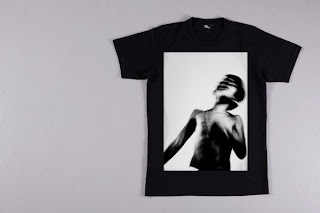For this project we've been looking extensively at layout for newspapers, magazines and other forms of typography and imagery combined.
 |
| My first design, Art Chantry inspired. |
The theme for my magazine cover and my Conflict in Words and Images project as a whole is the London 7/7 bombings as I myself have a personal connection to this event, living in London at the time of the attack, and it also fits in nicely with the brief of the project.
For the imagery used in this magazine spread I've chosen images of obvious relevance to the attacks.
I took just a regular London bus and added an effect inspired by graphic designer Art Chantry who's work we looked at for this project - this effect is the decay of the images, I replicated this on the bus by cutting it up and separating the pieces then grouping the layers back together, allowing me to move the image as one. Also in alot of his posters he uses a halftone filter effect which I used on the background image for my magazine, as well as turning it black and white to bring out the foreground images, I split up the background explosion to the actual skyline as I found this very effect in bringing out the cloud, which only had a black and white effect, I also seperated the ground in the background, using magic wand tool, I turned the hue red and increased the saturation to bring some warmth into the image. I think using the rule of three to break up the background worked well and I may do this again in the next magazine spread I make, I also tried to keep to mainly using black white and red as alot of the posters/war images we've been looking at throughout this project stick with this colour scheme, it does work very well for something involving conflict, it seems to represent power and conflict.
 |
| In the making. |
When I brought the bus into the image I highly considered putting the text onto it as if it were some type of board, I did start to do this by blacking out the advert on the side and writing 'London BOMBings' over this, I originally intended to make this a bit like a title but I thought that this may damage the layout and magazine feel. I kept this small bit of typography because it didn't damage the overall look of the spread and going back to the brief of the project - 'WORDS in conflict and IMAGES' this was my way of directly combining two of the main elements of the project.
The layout of my magazine spread is based mainly around the positioning of the mushroom cloud, I see this as the main focal point, therefore I decided all the other typography and images had to revolve around this.
In terms of who my audience would be for this magazine, I think it would mainly be aimed at teenagers upwards, and I don't think you would have to have certain interests in order for it to appeal to you.
 |
| My final explosion style magazine cover. |
This is a another quick magazine cover which I created in photoshop, it started off with an idea in my head about emphasizing the damage to the underground train, and making quite a graphic image out of it.
So I thought that adding fire to the image would be a good way of doing this, firstly to make this I choose a very active image of the train, once I had this I lassoed around the edge of the train and took all colour out of the surrounding area, as well as dimming it down slightly, this was to make the the train stand out even more than it was going to later on.
Secondly I found an image of fire, I wanted something explosive, quite literally and I found this and took it into photoshop, Prior to adding it to the train image I made no changes, although I originally intended to add a halftone filter, I decided however to keep it in it' naturally state.
Finally I drew around the train and took this selection to the image of fire and put it other what i thought to be the most effect and consistantly aggresive part of the fire, once I had it, I copied and made a new layer to past it into. I then laid this over the train and used an overlay filter to combine the two images, it created a really exciting image that i was overall very please with, it was more graphic than I thought it would be, I had a more comic stip look in mind, but I was happy with it.
 |
| In the making |
 |
| Four different versions of my final piece, all the same design with the bus', but up again different coloured backgrounds. |
 |
| My magazine layout in the making. |











































